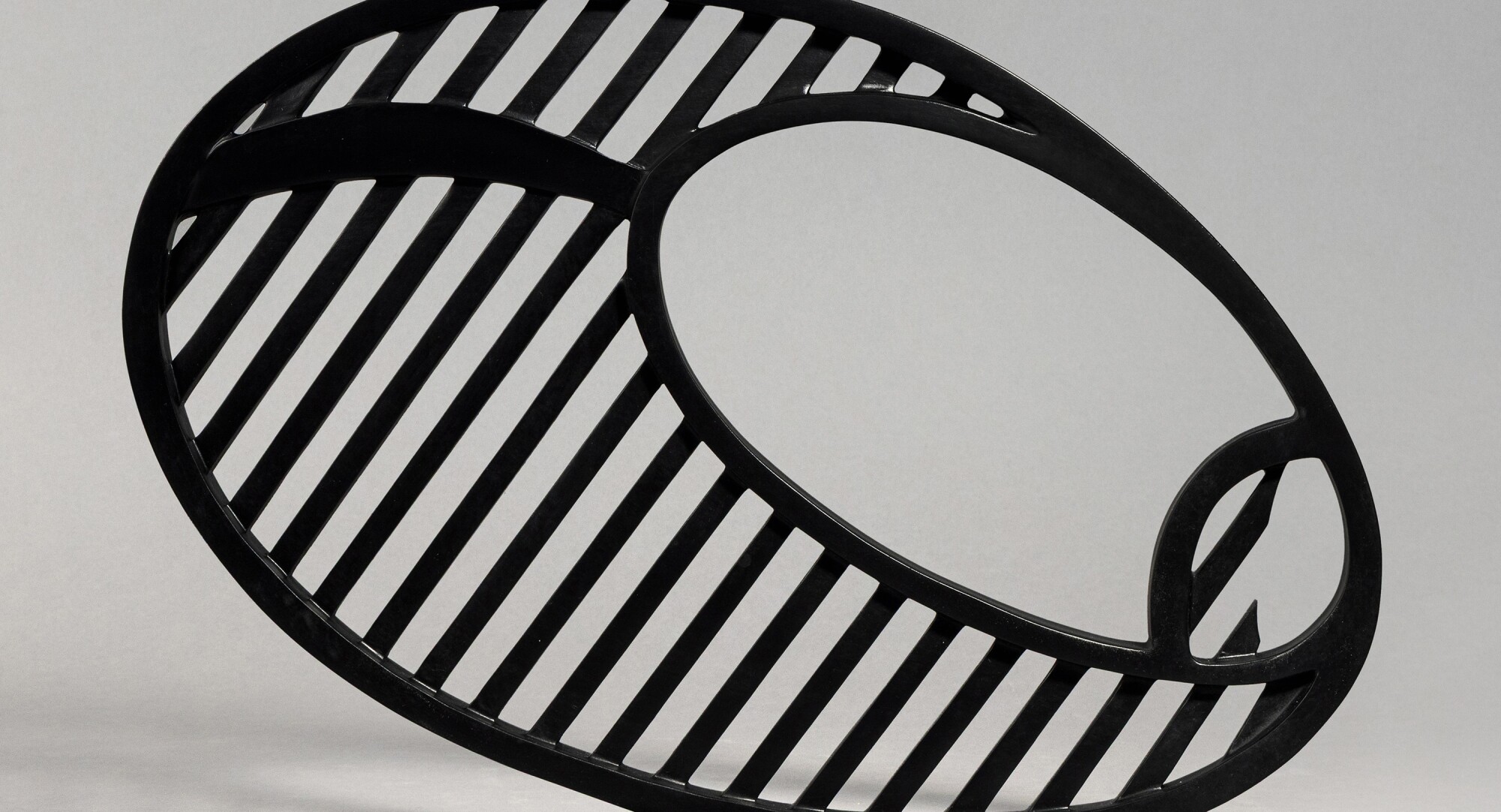"People think Pop is just about comics and ads, but my mirrors, my brushstrokes, my sculptures - they're all talking to Matisse, to Picasso, to Brâncuși. The dialogue never stops."
Roy Lichtenstein’s New Born stands as a masterful testament to the artist’s engagement with sculptural form and his dialogue with art historical precedents. The work exemplifies Lichtenstein’s exploration of the interplay between two-dimensional imagery and three-dimensional form, a theme that permeates his sculptural practice. The title New Born alludes to Constantin Brâncuși's seminal sculpture Le Nouveau-Né (1915), reflecting the dialogue with his early modernist forebearers and exemplifying Lichtenstein’s ability to reimagine the artistic idioms of the past.

Centre Pompidou, Paris
Image: © White IMages/Scala, Florence
Artwork: © Succession Brâncuși - All rights reserved. ADAGP, Paris and DACS, London 2025
Throughout his career, Lichtenstein was known for translating motifs from his paintings into sculptural forms, challenging the boundaries between mediums. Working in a similar process to his paintings, Lichtenstein’s sculptures often began as sketches, which would then be developed into paper collages and subsequently into full-scale maquettes. These maquettes would then serve as the basis for casting in bronze. The present work was first conceived as a sketch dating back to 1982. In subsequent pages in the same sketchbook, Lichtenstein also sketched Brancusi’s Torso d’un jeune homme (1923) and Sleeping Muse (1910), the latter of which he would also transform into a bronze sculpture. The present work, alongside the Sleeping Muse, is one of rare examples in which Lichtenstein patinated the bronze as opposed to painting, following the material process and the traditional techniques of bronze casting in contrast to his radical challenging of the sculptural form itself.
"Brâncuși's purity of form was revolutionary, but what interests me is how his 'essentials' can become part of our visual language today - through irony, through Pop, through making it new again."

Celebrated for his abstraction and reduction of form to the very essential qualities, Brâncuși’s works contained many qualities that resonated with Lichtenstein’s aesthetic and artistic interests of the 1980s. Indeed, this decade is marked by a continued investigation into the language of abstraction and the conventions of representation, as he made many of his most seminal sculptural works, such as Sleeping Muse (1983) and the Brushstroke Head series (1987), which fused the gestural brushstrokes of Abstract Expressionism with stylized facial features. Lichtenstein's sculptural work often played with the illusion of dimensionality, much like his paintings. In the present work, the smooth, curvilinear planes and simplified contours suggest a figurative essence while also remaining resolutely abstract, imbuing the solemnity of modernist sculpture with a playful, almost cartoonish vitality. As noted by art historian Nancy Spector, his sculptures are “concrete versions of the artist's basic graphic painting techniques,” wherein “Lichtenstein's signature lines become three-dimensional and concrete” (Nancy Spector, Exh. Cat., Washington, D.C., National Gallery of Art, Lichtenstein: Sculpture and Drawings, 1999, p. 33). This observation is particularly pertinent to New Born, which, despite its three-dimensionality, retains a sense of flatness and graphic clarity reminiscent of Lichtenstein’s paintings.
"I'm interested in the kind of drawing that looks as if it's been mechanically done...even in sculpture, I want it to have that impersonal look, as though it were made by machine."
The act of appropriation was not mere pastiche but a deliberate strategy, one that underscored Lichtenstein’s broader practice of reworking existing imagery, whether from comics, advertisements, or art history. Just as he had transformed comic strip panels into high art, he now transformed Brâncuși’s avant-garde innovations through the lens of Pop, collapsing the boundaries between reverence and reinvention. By invoking Brâncuși, Lichtenstein positions New Born within a lineage of sculptural innovation, while simultaneously infusing it with his characteristic Pop sensibility. By synthesizing references to modernist sculpture, employing a rigorous process of translation from sketch to bronze, and maintaining his distinctive graphic style, Lichtenstein created a work that is both a homage to artistic tradition and a testament to his unique vision.